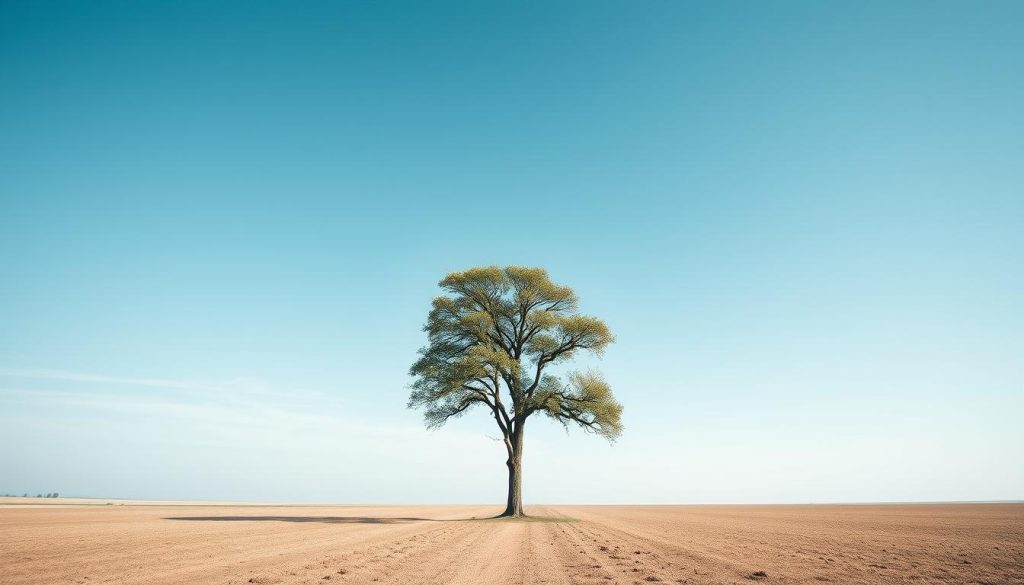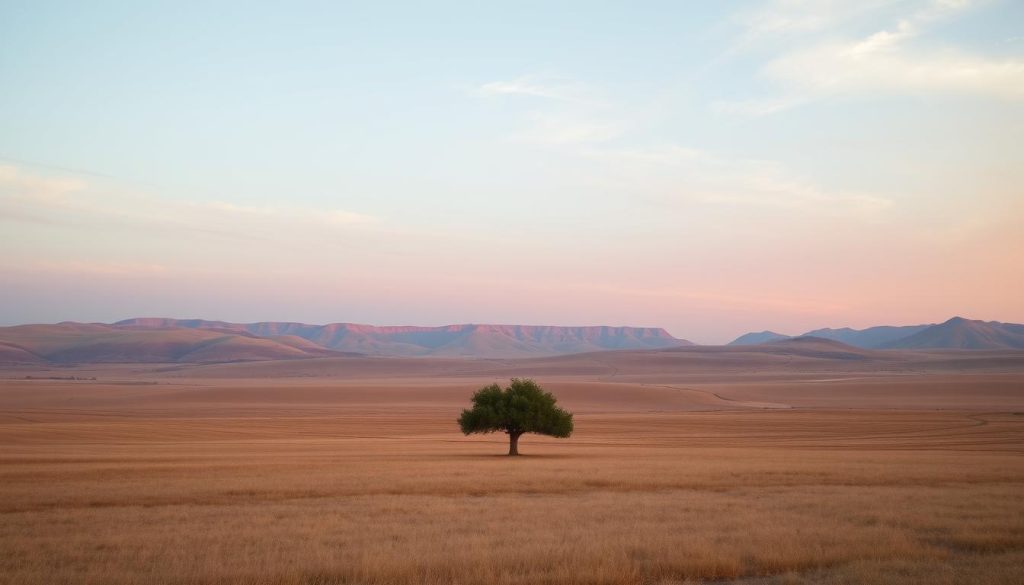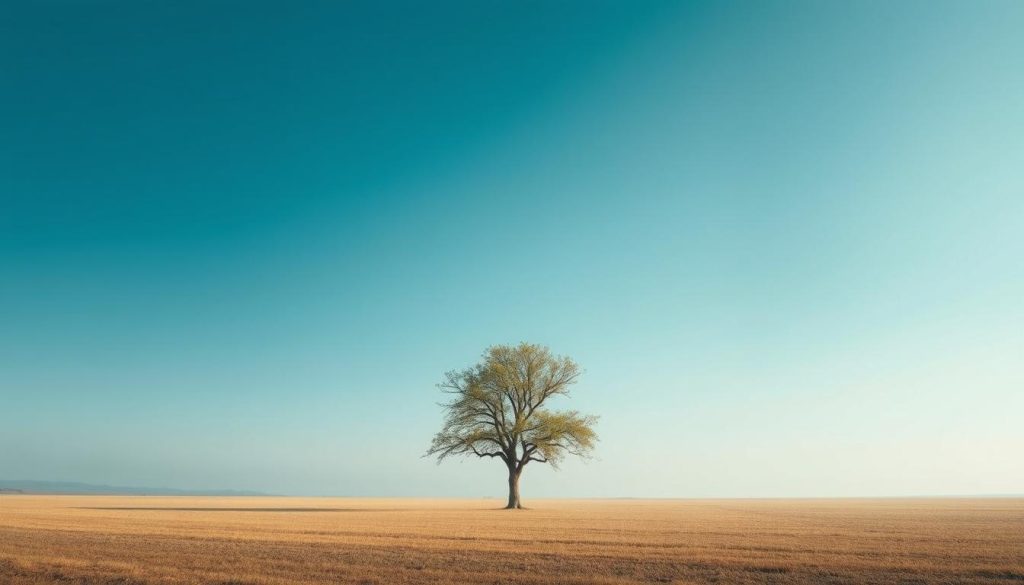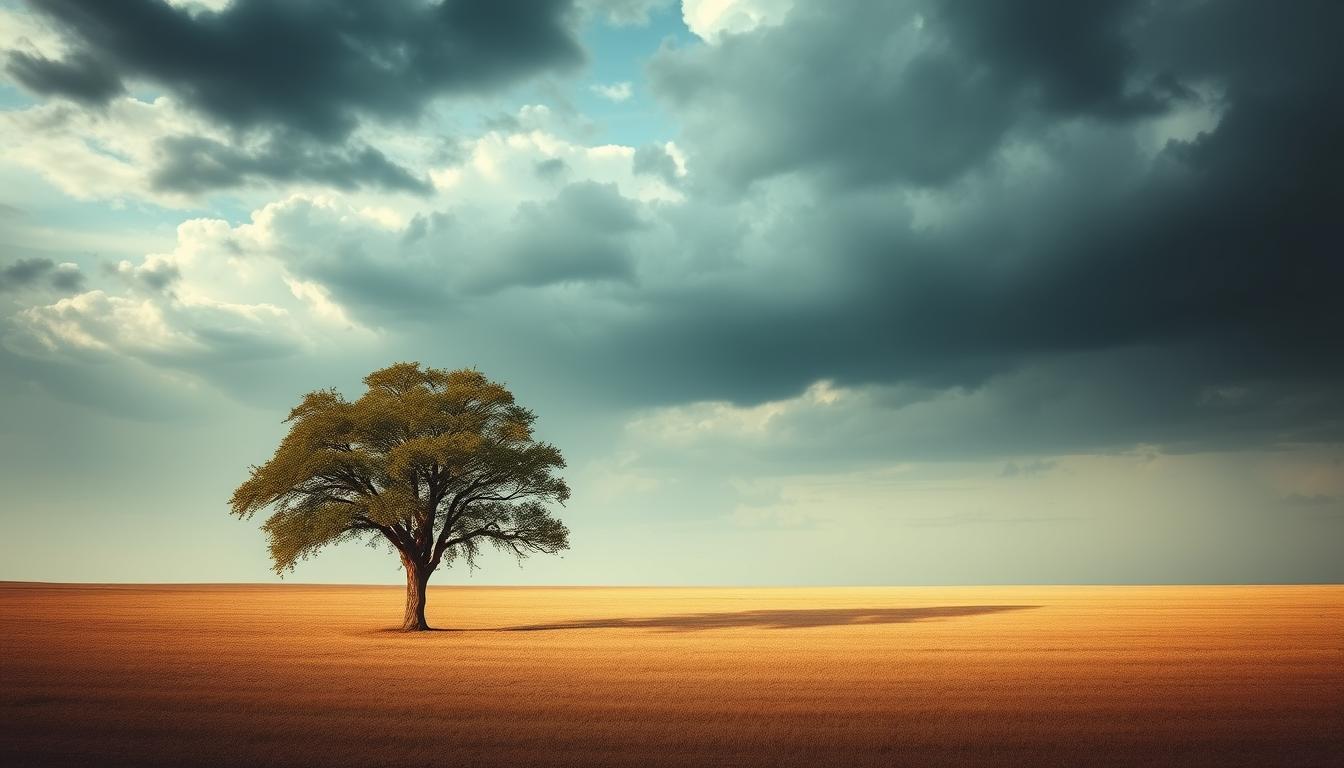Negative space is a key tool in photography. It can make your images stand out. By using negative space well, you can create stunning photos that grab attention.
In this guide, we’ll explore negative space. You’ll learn how to use it to make your photos amazing.
Negative space is the empty area around your main subject. It’s not just about the subject itself. It’s about the space around it too.
This way of thinking can make your photos look amazing. They can leave a strong impression on people.
Whether you’re new or experienced in photography, negative space is important. It can make your photos better by focusing on what’s important. It adds balance and simplicity to your work.
Understanding the Power of Negative Space
In photography, “negative space” is often ignored, but it’s very powerful. It’s the empty space around the main subject. This space is key to balance, focus, and interest in an image.
Defining Negative Space in Photography
Negative space in photos is the area around the main subject. It’s the empty space that makes the subject stand out. This space is not just empty; it’s a part of the photo’s beauty.
The Role of Negative Space in Composition
Negative space is a key part of negative space composition. It helps focus the viewer’s eye on the main subject. It also adds balance and makes the subject pop by giving it a clean background.
Learning to use what is negative space in photography can make your photos amazing. It lets you create images that grab your attention and touch your heart. By understanding importance of negative space, you can explore new ways to express yourself through photography.
Negative Space Enhances Subject Impact

Using negative space can make your subject stand out more. By placing your main focus in a sea of empty space, you highlight its importance. This draws the viewer’s eye right to it.
This method works well in portraits, product shots, and landscapes. It adds scale, depth, and calm to your images.
To use negative space well, follow these tips:
- Find your main subject and leave lots of empty space around it.
- Try different setups to find the right balance between your subject and space.
- Use negative space to add simplicity, elegance, and minimalism to your photos.
Learning about negative space can make your photos more stunning. It’s a great way to grab your audience’s attention and make your photos more emotional.
Exploring negative space can take your photos to a new level. Let empty space make your subject clear and impactful.
Techniques for Utilizing Negative Space Effectively
Learning to use negative space in photos takes skill and knowledge. You need to know how to place your subjects in the frame. This creates balance and makes your photos stand out.
Framing and Placement of Subjects
Here are some tips on how to frame negative space:
- Use the rule of thirds to place your subject off-center. This leaves lots of negative space around it.
- Try asymmetrical compositions. Place your subject off-center for an interesting balance.
- Lead the viewer’s eye to your subject with lines like paths or roads. This frames your subject with negative space.
Playing with Perspective and Depth of Field
Changing perspective and depth of field can also be powerful:
- Change your camera angle to alter the subject’s relation to negative space.
- Use depth of field to blur the background. This makes your subject pop and adds depth.
- Try different lenses to change how negative space and subjects appear in your photos.
Mastering these techniques lets you use negative space to make stunning photos. These photos will grab your audience’s attention.
Negative Space in Different Genres of Photography

Negative space is key in photography. It works well in many styles, each with its own needs. By using negative space, you can make your photos stand out, whether it’s landscapes or portraits.
Landscape and Nature Photography
In landscape and nature photos, negative space shows the world’s vastness. It makes scenes feel bigger and calmer. By using lots of empty space, you highlight the beauty of wide views, mountains, or water.
Portrait and People Photography
In portraits, negative space focuses on the person. It makes the subject stand out by removing distractions. This helps show their emotions and connection with the viewer.
Using negative space well can make your photos better, no matter the subject. It’s all about creating stunning and touching images.
| Photographic Genre | Role of Negative Space |
|---|---|
| Landscape and Nature | Convey a sense of scale, tranquility, and the vastness of the natural world. |
| Portrait and People | Draw attention to the subject’s features, creating a sense of intimacy and focus. |
Negative space in photography: A Minimalist Approach

The minimalist way in photography uses negative space a lot. It makes images clean, impactful, and eye-catching. Photographers must think hard about each part of the picture. This helps make sure every part has a purpose.
Looking at negative space in a minimalist way can improve your photos. It helps you make pictures that grab people’s attention.
Minimalist photography is all about negative space. This empty area makes the subject pop. It adds simplicity and focus to the picture.
By placing your subject right and using negative space smartly, you can make beautiful and deep images.
To get good at minimalist photography with negative space, try these tips:
- Make your main subject small in the frame, with lots of negative space around it.
- Try different angles and views to find balance and symmetry.
- Use negative space to guide the viewer’s eye to the key parts.
- Choose simple, clean backgrounds that highlight the subject and negative space.
Using negative space in minimalist photography can make your images stand out. It can also touch people’s hearts. Try this technique to make your photos special and draw in your audience.
Balancing Negative Space with Other Elements
As photographers, we often focus on negative space to make compelling images. But, it’s key to remember that negative space is just part of the picture. By adding color, texture, and lines, we can make our photos even better.
Incorporating Color, Texture, and Lines
Color, texture, and lines are powerful tools. They work with negative space to make our photos stand out. These elements can draw the viewer’s eye to the most important parts of our photos.
Bold, vibrant colors can make a big impact against negative space. Interesting textures add depth and dimension. They both work well with negative space.
Lines help guide the viewer’s eye through the photo. They can be straight, curved, or diagonal. By placing our subject and framing our shot, we can lead the viewer’s gaze.
| Element | Impact on Negative Space | Example Techniques |
|---|---|---|
| Color | Provides contrast and visual interest |
|
| Texture | Adds depth and dimension to the composition |
|
| Lines | Guides the viewer’s eye through the frame |
|
Mastering the balance of negative space with other elements opens up new creative possibilities. It’s a delicate dance, but it’s worth it. It helps us create images that captivate and engage our audience.
Developing an Eye for Negative Space
As a photographer, learning to see negative space is key. It makes your photos better and opens up new creative paths. By noticing empty space, I’ve found a new way to tell stories with my camera.
It begins with paying attention to the space around me. This could be in landscapes, portraits, or simple scenes. I look for shapes, textures, and lines that add depth to my photos.
This practice has sharpened my ability to spot and use negative space. Now, I can make my photos more impactful. It’s a journey of learning and growth, and I’m eager to keep improving.

